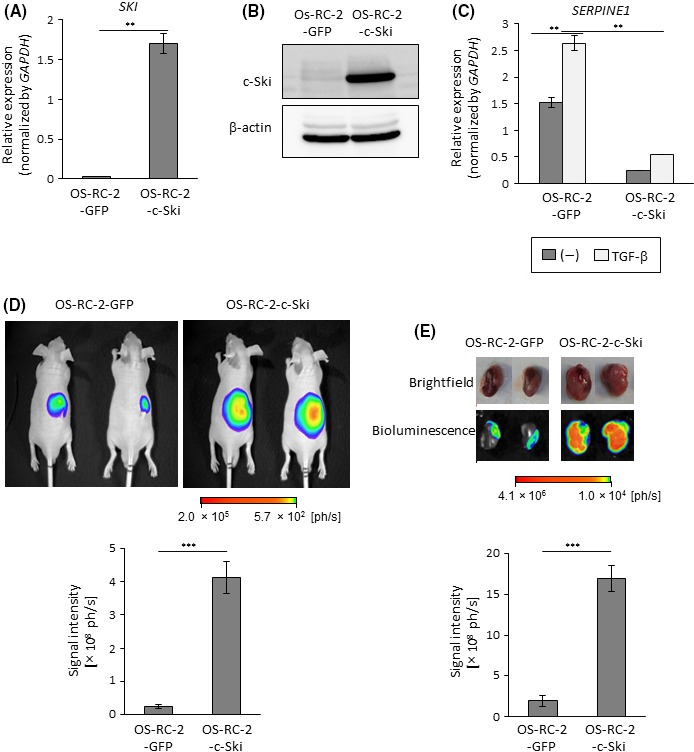Figure 2.

Enhanced tumor formation by c‐Ski in OS‐RC‐2 cells. A, OS‐RC‐2 cells were infected with lentiviral vectors encoding GFP (OS‐RC‐2‐GFP) or c‐Ski (OS‐RC‐2‐c‐Ski) and analyzed by qRT‐PCR for SKI expression. Data represent the mean ± SD. **P < .01. B, Immunoblots of lysates of OS‐RC‐2‐GFP and OS‐RC‐2‐c‐Ski cells with the indicated antibodies. C, qRT‐PCR analysis of SERPINE1 expression. OS‐RC‐2‐GFP and OS‐RC‐2‐c‐Ski cells were stimulated with transforming growth factor beta (TGF‐β) for 2 h and analyzed by qRT‐PCR. Data represent the mean ± SD. **P < .01. D, Tumor‐forming ability of OS‐RC‐2 cells. BALB/c nu/nu male mice received renal orthotopic injection of OS‐RC‐2‐GFP (n = 6) or OS‐RC‐2‐c‐Ski (n = 5) cells (1 × 105 cells per mouse). Upper panels: representative photographs of in vivo bioluminescence imaging of tumor‐bearing mice 13 d after the injection. Lower panel: overall luminescence signal intensity; data represent the mean ± SE. ***P < .001. E, Tumor‐forming ability of OS‐RC‐2 cells. Tumor formation in mice in (D) was examined 3 wks after the injection. Upper panels: representative photographs of brightfield and ex vivo bioluminescence imaging of extracted kidneys. Lower panel: overall luminescence signal intensity; data represent the mean ± SE. ***P < .001
